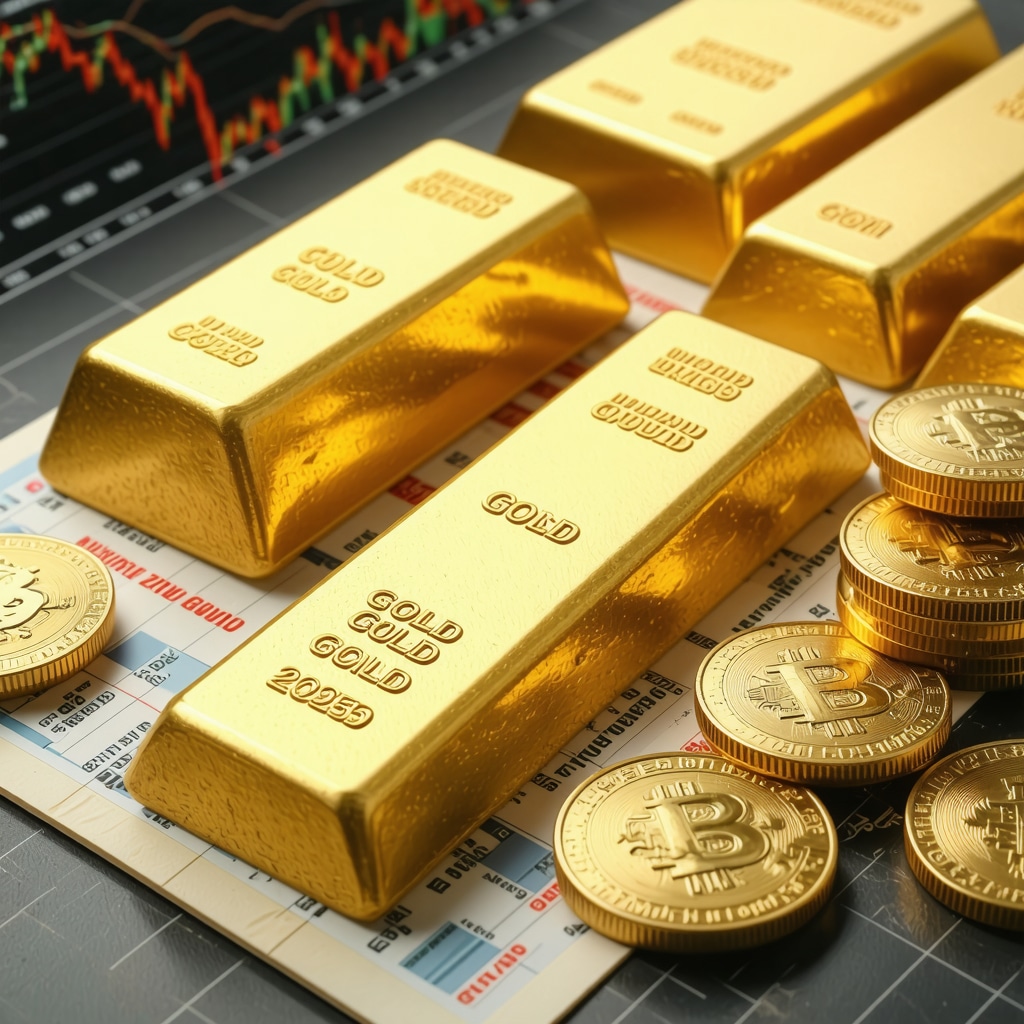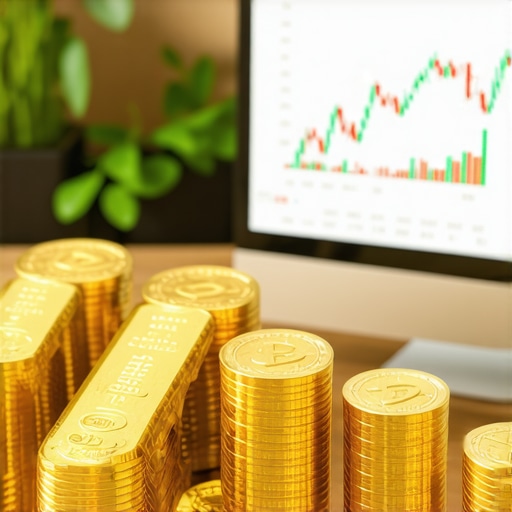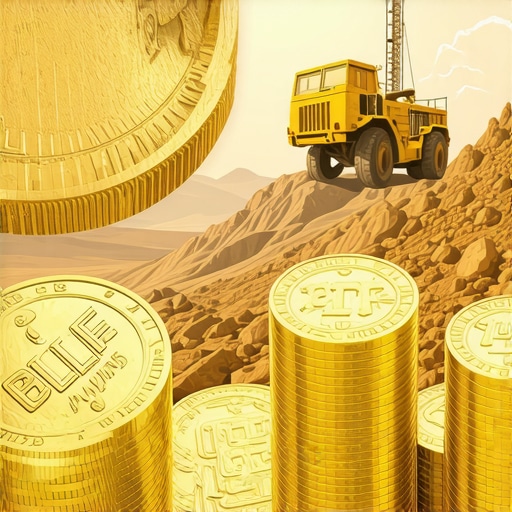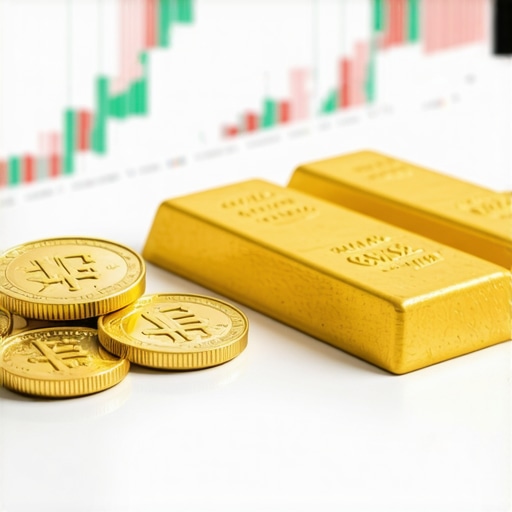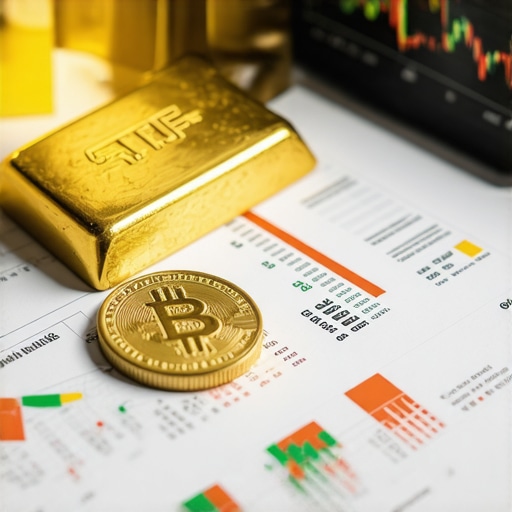Unveiling the Future of Gold Investment: Strategic Insights for 2025
As global financial landscapes evolve amidst geopolitical tensions, inflationary pressures, and central bank policies, gold remains a pivotal asset class for sophisticated investors. Understanding the nuanced strengths and vulnerabilities of various gold investment options is essential for portfolio diversification and wealth preservation in 2025. This article delineates the most influential gold investment types, elucidates their advantages and drawbacks, and offers expert guidance tailored to discerning investors seeking to optimize their strategies.
Decoding the Spectrum of Gold Investment Vehicles in 2025
Physical Gold Assets: Coins, Bars, and Bullion – The Tangible Anchor in Portfolio Diversification
Physical gold, encompassing coins, bars, and bullion, continues to serve as a cornerstone for wealth safeguarding. Its intrinsic value, liquidity, and resistance to digital vulnerabilities underpin its appeal. However, considerations such as secure storage, insurance costs, and liquidity timing necessitate meticulous planning. Recent innovations in secure vault storage and insurance policies have enhanced the safety and accessibility of physical gold, making it a resilient hedge amid economic turbulence.
Gold ETFs and Mutual Funds: Enhancing Liquidity with Diversification
Exchange-traded funds (ETFs) and mutual funds specializing in gold offer investors exposure without the complexities of physical storage. Their ease of trading, transparency, and diversification benefits make them attractive, especially in volatile markets. Yet, they introduce counterparty risks and management fees, which can erode returns over time. The strategic selection of low-cost, high-liquidity funds aligned with market trends remains vital.
Gold Mining Stocks and Sector Funds: Leveraging Industry Growth Potential
Investing in gold mining equities provides a leveraged exposure to gold price movements, amplified by operational efficiencies and geopolitical factors affecting mining outputs. Sector-specific funds enable targeted exposure to emerging regions or innovative mining technologies. Nonetheless, these stocks are subject to company management risks, geopolitical instability, and commodity price fluctuations. Deep industry analysis and risk management are paramount for success.
Expert Insights: Navigating the Crossroads of Risk and Return
In 2025, the optimal gold investment approach hinges on balancing risk appetite with strategic timing. For instance, hedging against inflation remains a primary motive, but the methods vary across physical assets, ETFs, or stocks. Field experience underscores the importance of understanding macroeconomic indicators, such as central bank gold purchases, which influence prices and market sentiment (see more here).
What are the potential pitfalls of over-reliance on gold during economic recovery phases?
While gold is often lauded as a safe haven, excessive dependence may hinder portfolio growth during periods of sustained economic expansion, where equities could outperform. Strategic diversification, including a mix of tangible and financial gold assets, can mitigate this risk and enhance resilience.
For further expert-level insights on maximizing wealth through gold investments, explore our comprehensive gold investment strategies for 2026. Your input and experience can also contribute to refining best practices—share your insights with our community of professional investors.
Harnessing the Power of Gold in Dynamic Markets: A Deep Dive into 2025 Strategies
As investors seek stability amid fluctuating economic signals, gold continues to be a critical component of sophisticated portfolios. Beyond traditional holdings, understanding the nuanced factors influencing gold prices—such as geopolitical developments, macroeconomic trends, and technological advancements—provides a competitive edge. For instance, recent research highlights how central bank policies significantly impact gold demand and supply, shaping market trajectories (see more here).
Could emerging technological trends redefine gold’s role as a safe haven in 2025?
Emerging technologies, including blockchain and digital gold platforms, are transforming traditional gold investment avenues. Digital gold, for instance, offers fractional ownership and enhanced liquidity, making gold more accessible for retail investors. Additionally, innovations in secure storage and authentication are enhancing trust and transparency, crucial for long-term wealth preservation. Experts suggest that integrating these technological tools into your investment strategy can maximize diversification and flexibility, especially during periods of market upheaval.
Expert-Driven Frameworks for Advanced Gold Portfolio Management
Developing a resilient gold portfolio in 2025 requires a strategic framework that balances risk, return, and liquidity. A practical approach involves:
- Dynamic Asset Allocation: Adjusting physical gold, ETFs, and stocks based on macroeconomic signals and market sentiment.
- Macro Trend Analysis: Monitoring inflation rates, interest policies, and geopolitical tensions to time entry and exit points effectively.
- Supply-Demand Dynamics: Analyzing changes in mine output, industrial demand, and central bank activities to anticipate price movements (more insights here).
Incorporating these elements into a comprehensive strategy can help mitigate risks associated with overexposure to gold’s volatility while capitalizing on its safe-haven properties during turbulent times.
What are the overlooked risks that could undermine gold’s performance in 2025?
While gold is traditionally viewed as a hedge against inflation and currency devaluation, recent geopolitical shifts and technological disruptions pose unforeseen challenges. For example, increased adoption of central bank digital currencies (CBDCs) might alter gold’s role in international reserves, potentially impacting demand. Moreover, environmental and regulatory issues within mining sectors could constrain supply, influencing prices. Staying informed through expert analysis and market reports ensures your investment decisions remain robust in face of these complexities.
For an in-depth exploration of diversification strategies, including gold’s place within broader asset allocations, visit our comprehensive guide on the role of gold in a well-balanced investment portfolio. Share your experiences or ask questions in the comments—your insights can contribute to a richer understanding of advanced gold investing.
Unlocking the Potential of Digital Gold: The Next Frontier in Wealth Preservation
The advent of blockchain technology has paved the way for digital gold platforms, revolutionizing traditional investment paradigms. Digital gold allows fractional ownership, enabling retail investors to diversify their portfolios with minimal capital outlay. Platforms like BitGold and PAX Gold leverage blockchain to provide secure, transparent, and highly liquid gold ownership options, bridging the gap between physical assets and the digital economy.
Furthermore, integrating digital gold into diversified investment strategies offers a hedge against currency fluctuations and geopolitical risks. According to a report by the World Gold Council (2023), the growth of digital gold holdings has outpaced physical gold in certain markets, reflecting a shift towards technological sophistication in asset management. As this trend accelerates, investors should evaluate digital gold’s regulatory landscape, security protocols, and liquidity options to harness its full potential.
How can investors effectively incorporate blockchain-based gold assets into their existing portfolios?
Incorporating blockchain-based gold assets requires a nuanced understanding of both technology and market dynamics. Diversification strategies should consider the correlation between digital gold and traditional assets, ensuring resilience during market upheavals. Conducting due diligence on platform security, regulatory compliance, and transaction fees is crucial. Moreover, integrating digital gold with traditional holdings through a layered asset allocation approach can optimize risk-adjusted returns.
Environmental and Ethical Considerations in Gold Mining: Navigating Supply Chain Risks
As sustainability becomes a central theme in investment decisions, the environmental impact of gold mining warrants serious scrutiny. The Responsible Gold Mining Principles (RGMP) established by the World Gold Council emphasize ethical practices, environmental stewardship, and community engagement. Investors focusing on ESG (Environmental, Social, Governance) criteria should prioritize mining companies adhering to these standards, as they tend to exhibit lower operational risks and offer long-term stability.
Recent investigations reveal that environmentally questionable mining practices can lead to regulatory crackdowns, supply disruptions, and reputational damage—factors capable of destabilizing gold prices. Therefore, due diligence on supply chains, including certifications like the Fairmined and Responsible Jewellery Council standards, is vital for constructing a resilient gold investment portfolio.
What advanced tools and data analytics can aid in assessing the sustainability of gold investments?
Emerging analytical tools such as satellite imagery for environmental monitoring and blockchain traceability for supply chain transparency empower investors to make informed decisions. Platforms integrating ESG scoring models and real-time environmental impact data enable sophisticated risk assessment, aligning investment choices with ethical standards. Collaborating with specialized ESG rating agencies like Sustainalytics provides an additional layer of due diligence, ensuring alignment with long-term sustainability goals.
Strategies for Hedging Against Geopolitical Risks: Gold’s Role in Global Stability
Geopolitical tensions—ranging from trade wars to regional conflicts—pose significant risks to global markets. Gold’s role as a safe haven becomes particularly pronounced in such scenarios, but advanced investors should adopt dynamic hedging strategies to mitigate risks effectively. Utilizing options and futures contracts on gold can hedge against short-term volatility, while maintaining physical holdings safeguards against systemic disruptions.
Moreover, geopolitical risk assessment models incorporating geopolitical event simulations and macroeconomic indicators can forecast potential market reactions. For example, a sudden escalation in regional tensions might prompt a strategic rebalancing towards physical gold or digital assets, enhancing resilience.
How can geopolitical analytics be integrated into proactive gold investment strategies?
Integrating geopolitical analytics involves leveraging real-time data feeds, predictive modeling, and scenario analysis to inform timing and allocation decisions. Tools like geopolitical risk indices from geopolitical intelligence firms and macroeconomic dashboards can identify emerging threats early, allowing investors to adjust positions proactively. Combining these insights with traditional technical analysis enhances decision-making precision, ensuring portfolios remain robust amid global uncertainties.
For those eager to deepen their expertise, engaging with specialized geopolitical risk assessment services and consulting with market analysts can provide actionable intelligence, transforming reactive strategies into proactive safeguards.
Stay ahead in the complex world of gold investing by exploring our comprehensive guide on advanced gold investment strategies for 2025. Your experience and insights are invaluable—join our community to exchange ideas and refine your approach to gold wealth preservation.
Harnessing Digital Innovation: How Blockchain is Reshaping Gold Investment in 2025
The integration of blockchain technology into gold investment is revolutionizing traditional paradigms, offering unprecedented transparency, security, and liquidity. Digital gold platforms like BitGold and PAX Gold utilize blockchain to facilitate fractional ownership, enabling investors of all sizes to diversify portfolios with minimal capital. This technological shift not only streamlines transactions but also enhances trust through immutable record-keeping, making gold more accessible and appealing in the digital age.
What are the key technological advancements driving digital gold’s growth?
Innovations such as smart contracts, secure cold storage, and real-time auditability underpin the robustness of digital gold platforms. According to the World Gold Council (2023), the exponential growth of digital gold holdings signals a paradigm shift, emphasizing the importance of adopting these tools for sophisticated investors seeking flexible wealth preservation options.
To leverage these advancements, investors should conduct thorough due diligence on platform security standards, regulatory compliance, and fee structures. Integrating digital gold into diversified asset allocations can mitigate risks associated with physical storage and geopolitical uncertainties, providing a dynamic hedge aligned with modern investment strategies.
Deepening Ethical Commitments: Advanced ESG Integration in Gold Mining
Sustainable investing is no longer optional but essential, especially within the gold sector. Leading industry initiatives like the Responsible Gold Mining Principles (RGMP) emphasize environmental stewardship, social responsibility, and transparent governance. Investors committed to ESG criteria should prioritize companies that adhere to certifications such as Fairmined and Responsible Jewellery Council standards, which signify responsible supply chain practices and lower operational risk.
Recent technological tools, including satellite imagery and blockchain traceability, empower investors to verify compliance and environmental impact, enhancing confidence in their holdings. ESG scoring models from agencies like Sustainalytics provide additional insights, enabling the construction of resilient, ethically aligned gold portfolios.
How do advanced analytics improve ESG assessment accuracy?
Tools such as remote sensing, AI-driven data analysis, and blockchain transparency facilitate real-time monitoring of mining practices, ensuring adherence to sustainability standards. These technologies enable investors to proactively identify risks related to environmental violations or social conflicts, thereby safeguarding long-term value and reputation.
For investors eager to deepen their ethical commitment, collaborating with specialized ESG rating firms and utilizing cutting-edge analytics ensures alignment with global sustainability goals and enhances portfolio resilience.
Strategic Hedging: Utilizing Derivatives to Navigate Geopolitical Uncertainty
In an increasingly volatile geopolitical landscape, sophisticated investors employ derivatives—such as options and futures—to hedge against sudden market shocks. These instruments allow for precise risk management, enabling quick responses to geopolitical developments like regional conflicts or trade tensions that could destabilize markets.
Integrating geopolitical risk models with real-time data feeds enables proactive rebalancing, ensuring portfolios are resilient against systemic shocks. For example, a strategic call option purchase during escalating tensions provides downside protection while maintaining upside potential.
How can geopolitical analytics be integrated into a proactive gold hedging strategy?
Utilizing predictive models, scenario analysis, and risk indices from specialized geopolitical intelligence services allows investors to anticipate crises and adjust positions accordingly. Combining these insights with technical analysis enhances decision-making, transforming reactive responses into proactive safeguards against market disruptions.
Engage with expert geopolitical risk assessment services to refine your hedging techniques, ensuring your gold holdings provide maximum resilience during turbulent times.
Optimizing Portfolio Diversification: Balancing Physical and Digital Gold Assets
Effective diversification involves blending physical gold with emerging digital assets, creating a resilient, adaptable portfolio. Physical gold offers tangible security and historical stability, while digital gold provides liquidity and fractional ownership benefits, especially appealing to retail investors.
By analyzing correlations and market trends, investors can determine optimal allocations that reduce volatility and enhance returns. Incorporating advanced analytics and scenario simulations further refines this balance, ensuring the portfolio remains robust amid changing economic conditions.
What are the best practices for integrating physical and digital gold in a diversified portfolio?
Employ a layered approach, allocating physical gold for systemic stability and digital gold for flexibility and liquidity. Regularly review correlations, market signals, and technological developments to adjust allocations proactively. Collaborating with financial advisors specializing in digital assets can optimize this integration, aligning it with your long-term wealth preservation goals.
Stay informed by exploring our comprehensive guide on advanced gold investment strategies for 2025. Your insights and experiences are invaluable—join the conversation and enhance your expert knowledge in wealth preservation.
Expert Insights & Advanced Considerations
1. Embrace Blockchain Innovation for Enhanced Liquidity
Digital gold platforms utilizing blockchain technology are revolutionizing liquidity and transparency, enabling fractional ownership and real-time auditability that attract sophisticated investors seeking flexible wealth preservation tools.
2. Prioritize ESG Standards in Gold Mining
Integrating environmental, social, and governance criteria through advanced analytics and certifications like Fairmined ensures resilience and aligns investments with global sustainability goals, reducing operational and reputational risks.
3. Leverage Geopolitical Analytics for Proactive Hedging
Real-time geopolitical risk assessment models and scenario analysis empower investors to anticipate crises, adjust gold allocations proactively, and maintain portfolio stability amid global uncertainties.
4. Diversify Effectively Between Physical and Digital Gold
A layered approach combining tangible gold for systemic stability and digital gold for liquidity and fractional ownership optimizes risk-adjusted returns, especially in volatile markets.
5. Utilize Derivatives for Dynamic Hedging
Options and futures on gold serve as precise tools for hedging geopolitical and economic risks, allowing quick responses to market shocks and safeguarding long-term wealth.
Curated Expert Resources
- World Gold Council Reports: Offer authoritative insights into market trends, digital gold growth, and sustainability standards.
- Sustainalytics ESG Ratings: Provide detailed ESG assessments for mining companies, enhancing responsible investment decisions.
- Geopolitical Risk Indices: Enable proactive risk management through real-time geopolitical threat analysis.
- Blockchain Security Protocols: Ensure transparency and security in digital gold transactions, vital for trustworthy portfolio diversification.
Final Expert Perspective
In mastering gold investment in 2025, integrating technological innovation, sustainability standards, and geopolitical analytics is paramount. These advanced strategies empower investors to navigate complexities with confidence, ensuring resilient and profitable portfolios. For those committed to staying ahead, exploring comprehensive resources and engaging with industry experts will deepen your expertise. We invite you to contribute your insights or seek tailored advice—your proactive engagement is key to long-term success in this dynamic field.
,






